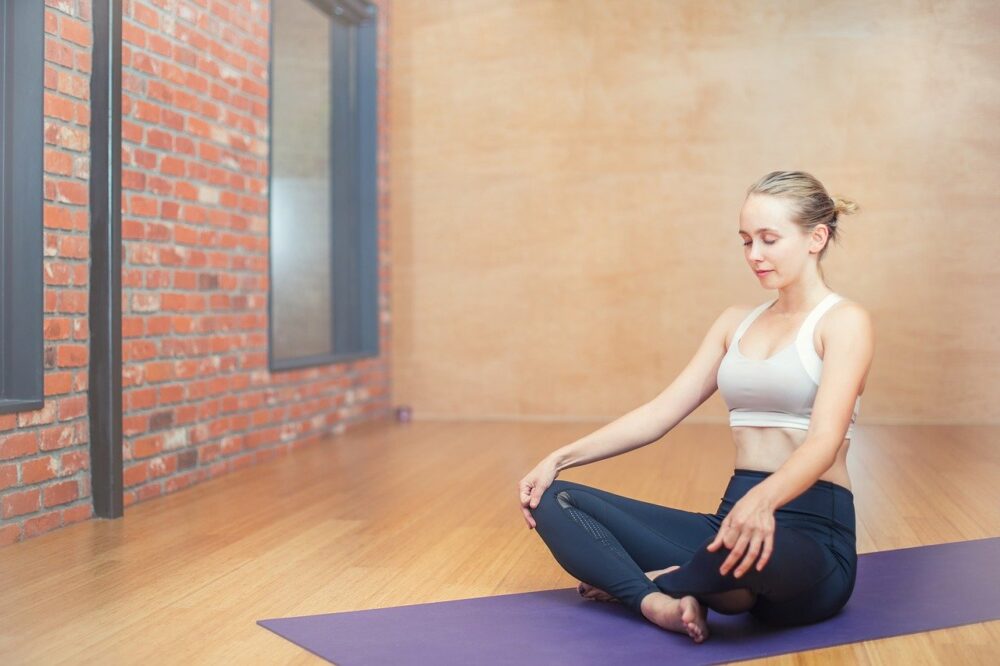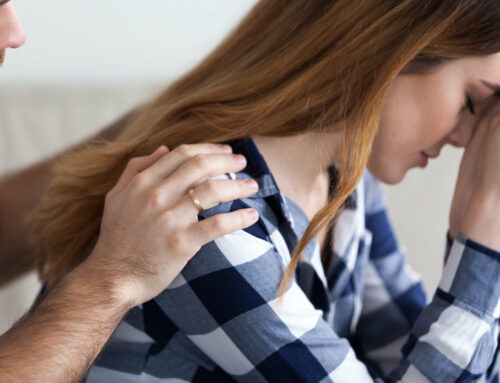Anxiety is common, and everyone experiences anxiety. However, when anxiety disrupts your normal day to day functioning and interferes with your lifestyle it can be draining, frustrating and limits the way you live your life. We have treated clients over the years who didn’t want to take medication and wanted to manage their anxiety. Before reaching for that Xanax, give one of these de-stressing exercises a try. They are utterly simple, take almost no time, require no equipment and can be done almost anywhere.
These de-stress exercises are guaranteed to become a staple in your routine.
- Breathing Exercises
One of my favorite ways to destress quickly is by doing a breathing exercise. When you slow your breathing, your heart rate will naturally slow, and you’ll notice your stress and anxiety reduce immediately. The heart
How: (1) For the abdominal breathing technique put one hand on your chest and the other on your stomach. Take a deep breath in through the nose expanding and filling your stomach with air. The goal is six to ten deep, slow breaths. (2) With the 4-7-8 Breathing Technique you exhale completely through your mouth. Next, close your mouth an inhale quietly through your nose to a mental count of four. Hold your breath for a count of 7. Exhale completely though your mouth to the count of 8. Complete this cycle three more times for a total of four breaths.
- Progressive Muscle Relaxation
Progressive Muscle Relaxation teaches you how to relax your muscles. Not only can this exercise help with lowering stress levels, this can also help reduce physical problems like stomachaches and headaches. By tensing and releasing, you learn not only what relaxation feels like, but also to recognize when you are starting to get tense during the day.
How: First systematically tense a particular muscle or part of your body. Start with your feet and work your way up ending with your forehead. Take a slow, deep breath and squeeze the muscle as hard as you can for about five seconds. Make sure to feel the tension in the muscle even if it causes discomfort. But, be careful not to hurt yourself. After five seconds, exhale and relax the muscle. You should feel the muscle become loose and limp as you relax it. Focus on feeling the difference between the tension and the relaxation. Remain in this relaxed state for fifteen seconds and then move on to the next muscle group and continue until you complete all the muscle groups. If you are limited on time you can do the release only technique which involves going through the muscle groups, relaxing each one.
- Body-Scan Meditation
Similar to progressive muscle relaxation, body-scan meditation involves feeling different parts of your body. However, unlike progressive muscle relaxation with body-scan mediation the aim is to be aware of the different regions of your body and allowing yourself to experience how each part feels without trying to change anything. This technique helps quiet your mind and relax the body by helping you to focus on different sensations in each body part.
How: Close your eyes and starting at your toes take inventory of the sensations in that body part. Do your toes feel warm? Hot? Cold? Do they feel heavy or light? Spend between one and two minutes in each body part and move your way up ending at the head. If you are close to your phone or computer you can use body-scan mediation audio to help guide you through the exercise. These audios vary in length, depending on how much time you have to do this exercise. There are several available for free at UC San Diego Health Center for Mindfulness here https://health.ucsd.edu/specialties/mindfulness/programs/mbsr/pages/audio.aspx
- Imagery and Guided Imagery
By using guided imagery you visualize of image things suggested in order to create physiological and psychological healing. It is a way of focusing your thoughts to create calm and peaceful images in your mind and in this way provides a mental escape. Different ways of utilizing guided imagery include listening to audio, reading scripts or just imagining. Depending where you are and what you have available to you can determine which technique you use. Even ten minutes of imagery can reduce blood pressure, lower cholesterol and glucose levels in the blood and heighten short-term immune cell activity. It may also help you feel more in control of your emotions and thought processes, which may improve attitude and sense of well-being.
How: By doing this exercise by just imaging follow this script. Imagine an orange or lemon in great detail. Imagine the smell, the color, and the texture of the fruit. Continue to imagine the smell of the lemon and then see yourself taking a bite of it and the feeling the juice squirting into your mouth. To achieve an even more relaxed state, image all the details of a safe, comfortable place, such a beach, garden, or room in your home. Focus on what the space feels like on your body. Focus on the smells and the sounds. For guided imagery audio visit Dartmouth’s Wellness Website for free guided imagery http://www.dartmouth.edu/~healthed/relax/downloads.html#guided
Doing these exercises before you feel your fight-or-flight kick in can help promote feelings of calm and relaxation throughout the day. Try to practice these exercises when you are already calm, by practicing these exercises while calm, it will be easier to do them when you are feeling anxious.
If you want to learn how to manage anxiety we are a group of skilled therapists specializing in individual and couples counseling. Since Covid started we have been working with couples providing Online Couples Counseling in New York, New York City, Scarsdale, East Hampton, Buffalo, Albany, New Jersey, Hoboken, Jersey City, Princeton, Chatham, Morris, Westfield, Union, Bergen County, Millburn, Montgomery, Somerset, Colts Neck, Tenafly, Alpine, Ridgewood, Englewood, Englewood Cliffs, Franklin Lakes, Hillsdale, Glen Rock, Montvale, Mahwah, Paramus, Park Ridge, Ramapo, Westwood, Glen Ridge, Rumson, Red Bank, Wayne, Little Falls, Hillsborough, Watchung, Summit, Springfield, Livingston, Montclair, Maplewood, Morristown, Berkeley Heights, Warren, Basking Ridge and Millstone. Schedule a complimentary consultation by clicking HERE.






